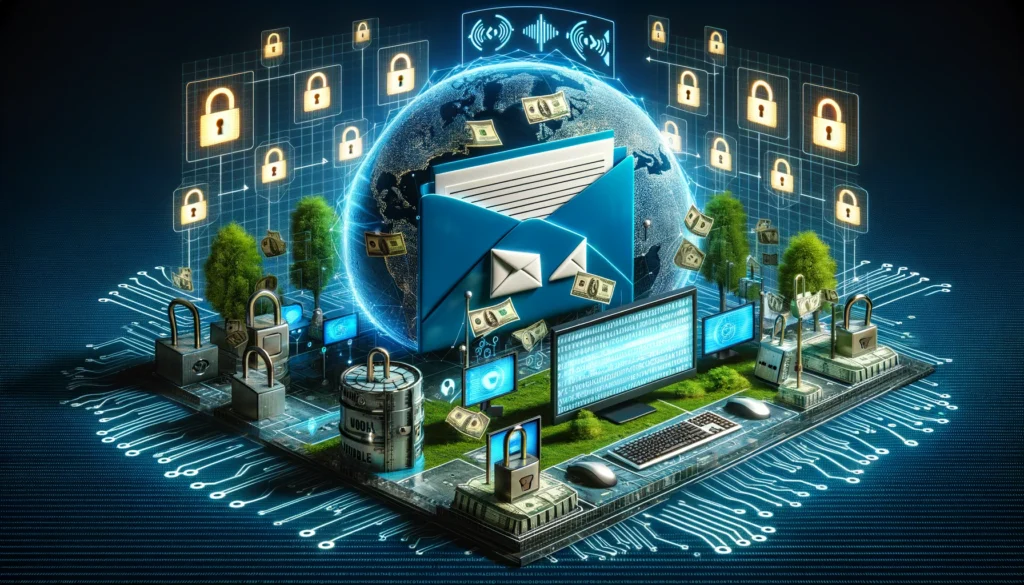Technology is in a constant state of evolution that creates a butterfly effect on the wider world, including society and businesses. Simultaneously, society goes through changes and influences businesses and technology. For example, the global pandemic hit, forcing businesses to work from home and families to stay indoors, led to tech manufacturers creating more communication devices and software. With the three so intrinsically linked, it’s only logical that we have to discuss all of them to get a clear view of the “new normal” we’re steering towards.
Crisis Behavior
Defining normal is difficult, but it’s safe to say that the global pandemic shattered its existing state. Countries shut down borders, retail facilities closed, and office workers worked from home. When everything began, the world was sent into crisis mode and uncertainty ensued. What happened after this, psychologists refer to as projection bias, which is a constant state of reflecting on the past and imagining future scenarios. Essentially, what we lost during the pandemic, we will constantly want back to a greater extent.
When we take projection bias and blend it with the state of business, there was a boom in spending on missed out opportunities. For example, people flocked to book holidays, eat out at restaurants, and go on large shopping sprees. The world is finding itself again and it reaches beyond the world of business, with traditions and cultural moments generating feelings of comfort. Eventually, as we move further away from the global pandemic, formalities, including shaking hands, will make a return on a wide scale.
Power Shifting
The world economic leaders are shifting, with the dominant US falling and China set to rise to become the largest economy over the next six years. One reason for this shift is the global pandemic, which closed down trade routes and kept countries isolated. On the back of this, China has created strong trade and support links with European countries, including Serbia and Italy, for Covid aid.
China and the US will always be dominant economic powers, which leaves the European Union lagging. Therefore, if the EU wants to stand a chance of maintaining power, they need to band together on issues including climate, security, migration, and the creation of job opportunities.
Growing Social eCommerce
When the global pandemic sent countries into lockdown, the way people shopped switched quickly to online, which drove up competition in the eCommerce space considerably. For a business to make it in 2022, they need to have a powerful online brand. For the most part, businesses use social media as a way of reaching their audience. According to studies, over two-thirds of shoppers make purchases through social media platforms. This is because of the rise of influencers leveraging platforms including Instagram, TikTok, and Facebook for social media marketing.
Social media marketing pushes the landscape further than throwing ads in peoples’ faces, which are ignored for the most part. Instead, it utilizes influencers, who review products on their platforms and drives up leads for chosen brands. If businesses want to win in this space, they need to be approaching influencers within their niche.
The Rise of AI
Artificial intelligence (AI) has been on the rise for a while now, so it makes sense that it plays a part in shaping the “new normal”. AI gives machines the power to emulate human intelligence, which allows them to carry out tasks and improve. The chances are that you’re using AI devices in your home, with Alexa, Google Home, and Siri all using AI to make your life easier.
Despite the commercial success of AI, including personal assistants, the true reach of the technology isn’t there yet. In the future, AI will revolutionize businesses across all industries. For example, through automation, the carbon footprint and operating costs of manufacturers will decrease. On top of this, tech manufacturers have made claims to enter the commercial market with more powerful AI tools.
When we look to the future, it’s clear that we will be largely led by machines and robots, with deep learning algorithms sitting in the background. Although causing job losses, this is a great opportunity for the new generation, with the option to pivot into leadership roles and steer the direction of manufacturing. Many online courses teach up-and-coming business students how to leverage the digital world to their industry’s benefit. This article on digital leadership from St Bonaventure University explains more.
A Business Rhythm Switch Up
The global pandemic, paired with constant technological advancements, has altered the general rhythm of businesses. For example, studies have shown that productivity increases when people work from home, which has led businesses to reimage the way they operate. As part of this, AI and the internet of things (IoT) will likely help to build a means of hybrid operation over the next decade.
On the back of this trend, manufacturers are producing more smart devices and there’s an increase in smart offices worldwide. Whether they like it or not, businesses and consumers need to embrace the change. This is exactly what happened during the global pandemic, and it’s expected that the traditional office will be replaced by a space for meeting up collaboratively.
Healthy Lifestyle Awareness
There’s no denying the havoc that the global pandemic wrought, but it did shine a light on health consciousness. For example, as well as the elderly, obese people and those with underlying medical conditions are susceptible to the virus. Therefore, in an attempt at prevention, people started to eat more healthily and do exercise. As well as keeping themselves healthy, people are more encouraging towards the health of those around them, with increased concern for mental health.
The shift in attitude has had an impact on the service industry, which means people expect high-quality care in terms of their physical and mental well-being. As well as changing the medical landscape, insurance customers are writing up contracts that are dependent on users living a healthy lifestyle. Outside of the medical world, the demand for fresh local produce has risen and there’s more need for health tracking gadgets including Fitbit.
Industry Personalization
We mentioned earlier that eCommerce has increased enormously throughout the pandemic, and this has led to more personalization for shoppers. Businesses are using omnichannel strategies, which tie together the offline and online experiences, to create a close relationship with their potential customers. Thanks to the shopping experience moving online, businesses can call on AI to learn how their customers are shopping, which lets them create a tailored experience.
With the rise of omnichannel strategies, businesses are making the most by setting themselves apart from their competition. Offering a seamless experience benefits customers and drives business up. Further, people who have a positive personal experience are more likely to recommend a brand to other users, who can engage with a brand on any platform.
Boosted Talent Well-Being
We’ve already established that society is focusing on keeping healthy, both physically and mentally. This has had an impact on the way businesses hire talent and look after their employees. For example, improving staff morale is becoming a central part of talent retention. Unfortunately, this isn’t an easy task to achieve, with the number of burnouts rising significantly as a result of loneliness, stress, and the inability to separate the home from work.
Companies are beginning to understand exactly what causes burnout. Therefore, instead of driving constantly for growth and development, business leaders are finding a happy balance between well-being programs, development, and productivity. When businesses achieve this balance, they find themselves with dedicated staff with fewer absences.
Pair Local With Global
The term “think global, act local” has been around for some time now, but its relevance has become increasingly prevalent. When broken down, this phrase means that the world needs to be looked after by making waves in the local area. One of the largest examples of this phenomenon can be seen in the Covid-19 vaccination program. Countries worked together on a global scale to develop the vaccine, manufacture it, and ship it out to those in need. The speed and teamwork seen during the vaccination drive have set new standards for curing other global issues.
Global lockdowns closed trade routes and caused manufacturing delays, which highlighted the importance of international trading. Therefore, there’s been a focus on supporting local businesses and increasing the manufacturing of goods within borders. Social expectations have shifted, and the next generation expects businesses to find solutions to local needs whilst contributing to the global movement.
Technology, society, and the business world are intrinsically linked, and nothing can happen in one world without impacting the other. For example, the global pandemic locked down countries, which caused businesses to close, which resulted in the tech world innovating in the communication space. While people were working from home, they had the opportunity to reflect on their lives and became conscious of their health, which led to change in the tech and medical world. “The new normal” is still being created and will likely remain in a constant state of flux.
- Review: Stellar Converter for OST - March 19, 2024
- High-Level Guide to Boosting PC Speed - February 19, 2024
- The Evolution of Digital Platforms: How 5G is Revolutionizing User Experience - February 5, 2024




Pingback: 9 Tech, Social, and Business Trends Creating the New Normal - The Ai Bureau